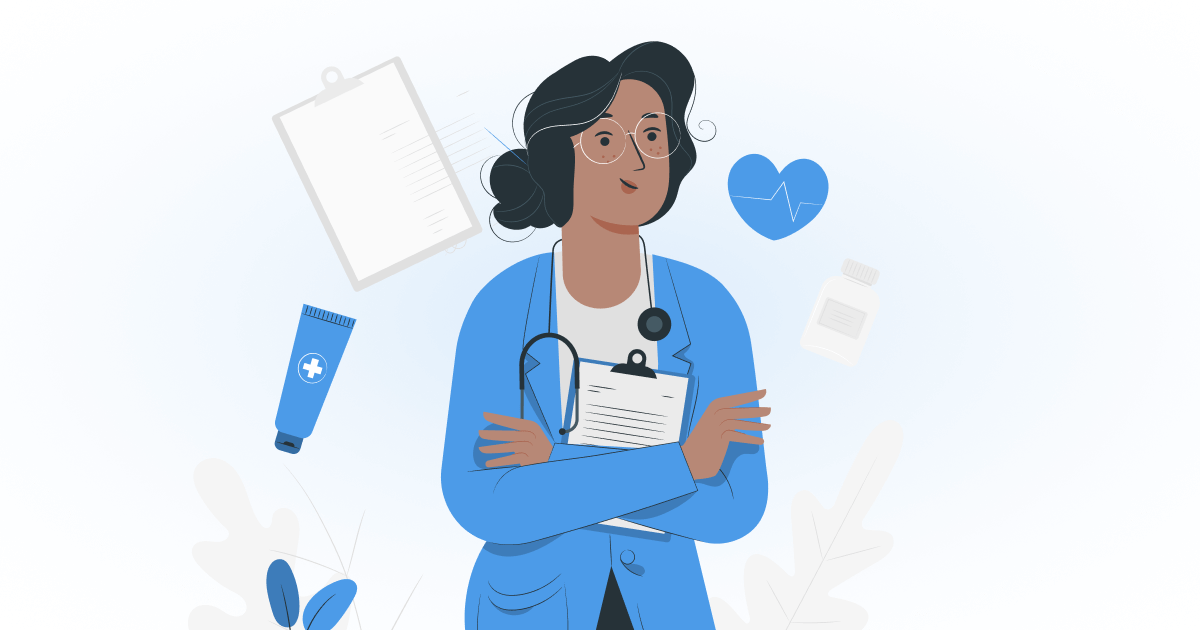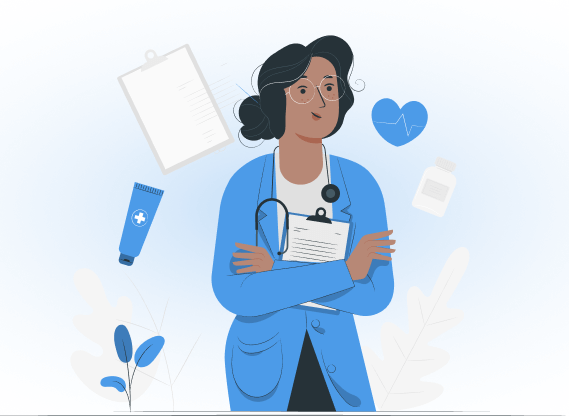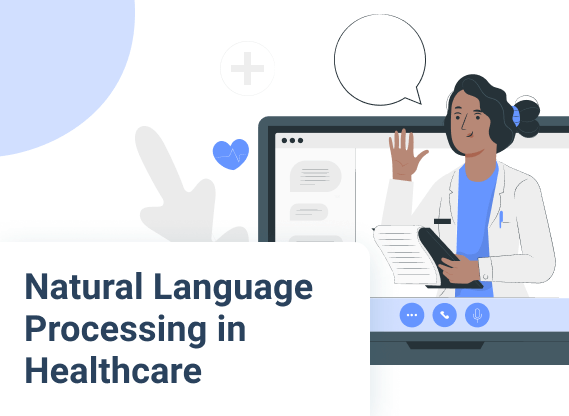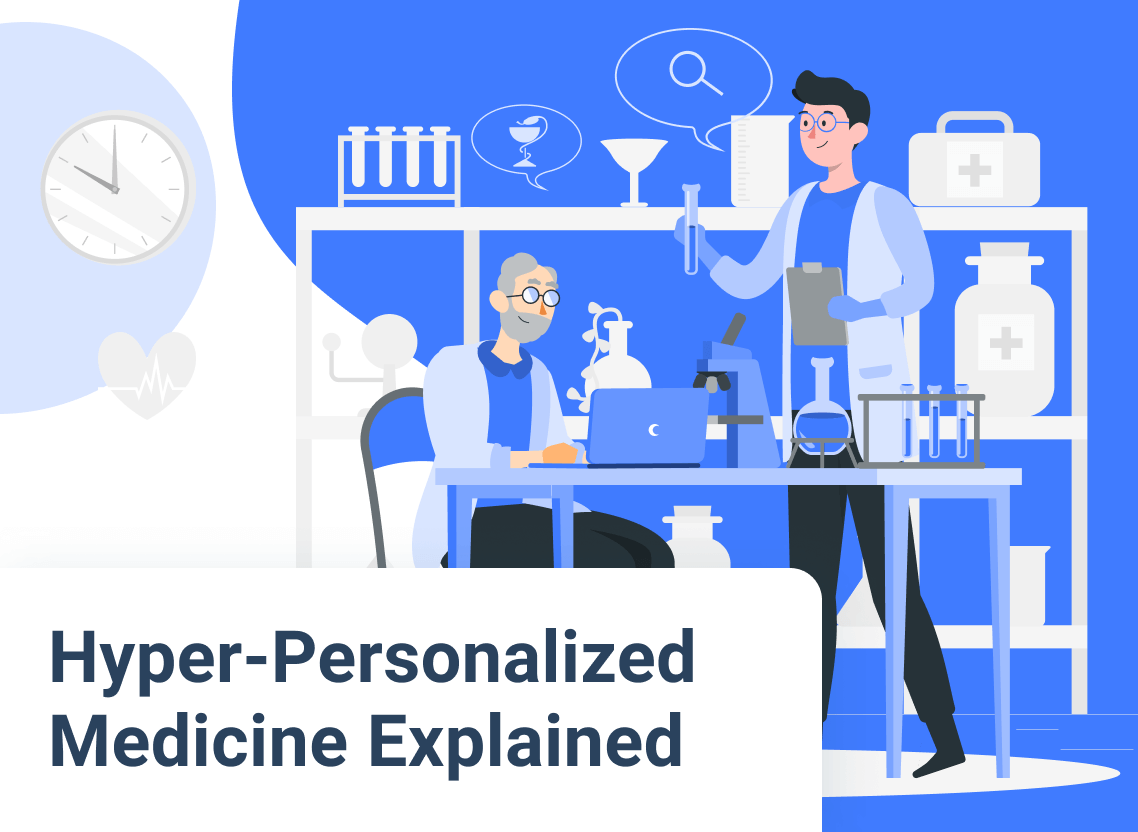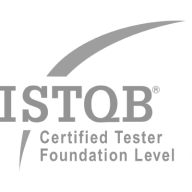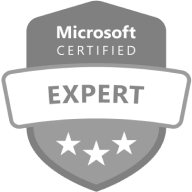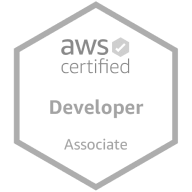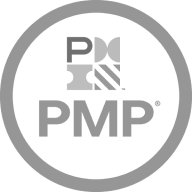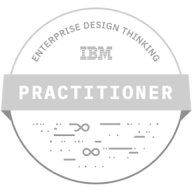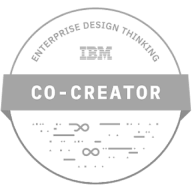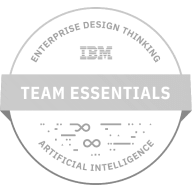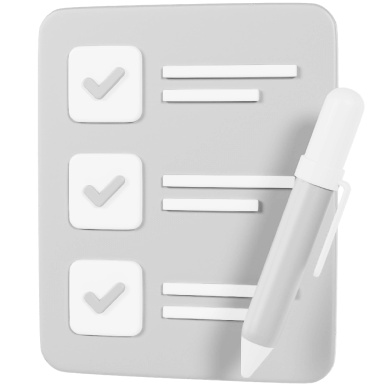
Want to know more? — Subscribe
The year 2024 promises to be pivotal for implementing and advancing digital healthcare technology trends. Each of them can improve patient outcomes and experiences and increase accessibility to care.
According to The State of Digital Health Report, 40% of participating countries have reached Phase 3 of digital health maturity. Three countries (4%) – Portugal, Saudi Arabia, and the UAE – are in Phase 5. Notably, no country is in Phase 1, reflecting significant advancements in digital health.
There are many exciting developments on the horizon. With ten years of expertise in delivering exceptional healthcare products, Softermii explores 15 emerging digital health trends in 2024 and explains what to watch for with each of them.
Keep reading and discover how to create the next generation of healthcare.
Healthcare IT Market Overview: Forecasts for 2024–2030
The global healthcare services market reached $7.9 trillion in 2023 and will continue to grow further, surpassing $9.8 trillion in 2027. Besides that, the healthcare IT market demonstrates significant growth as well. Following Precedence Research, it hit $235.6 billion in 2023 and is projected to reach over $1 trillion by 2032.
According to the recent Deloitte report, there's a growing demand for wearable devices, telehealth, and partially automated patient interactions with clinical protocols and AI. Thus, healthcare professionals seek new medical technologies to satisfy that demand and provide the desired impact on patient care.
Top 15 Digital Health Trends for 2024
The recent Telehealth Innovation Report from Sage Growth Partners indicates the biggest year-over-year increases in telehealth occurred in behavioral health (20%) and chronic care management (19%). By 2025, practitioners expect the highest growth in telehealth usage for mental health and primary care. Hospitals predict that mental health services will increase by up to 31%.
Read also: Cost of Telemedicine Software Implementation
As for the emerging technology trends in healthcare that already address the customer needs on the market, experts appraise the Internet of Medical Things (IoMT), cybersecurity measures, remote patient monitoring (RPM), FinTech integration, cloud migration, and Big Data analytics. These technologies have passed the pandemic test and proved their effectiveness in shaping the global digital health landscape.
As for other global healthcare industry trends, artificial intelligence (AI) and machine learning (ML) technologies are strengthening their positions. Among all, they suit the needs of patients the most accurately. Healthcare organizations can facilitate management and strongly empower analytics and decision-making.
Besides, robotic process automation (RPA) and cognitive automation (CA) are the most promising emerging technologies in healthcare. Combining ML and AI with other technologies introduces next-level automation and augmentation of improved compliance, control, and capacity processes.
So top healthcare digital transformation trends in 2024 are as follows:
- Internet of Medical Things (IoMT)
- Cybersecurity and Data Privacy
- Remote Patient Monitoring (RPM)
- Improved Big Data & Analytics
- Cloud Migration
- Robotic Process Automation (RPA)
- Cognitive Automation (CA)
- FinTech Integration
- Interoperability and Connectivity
- Telehealth
- Data Breach Prevention
- Network Strategies
- Tailored Patient Experience
- Artificial Intelligence and Machine Learning
- Virtual Reality and Augmented Reality
Let's dwell on them in greater detail.
Read also:Digital Transformation for Small and Medium Enterprises
1. Internet of Medical Things (IoMT)
According to Precedence Research, the global Internet of Things (IoT) in the healthcare market size was valued at $212.04 billion in 2023, and it is expected to reach around $962.21 billion by 2032 with a CAGR of 18.3% during the forecast period.
Wearables and trackers are a big part of healthcare information technology development. They can provide real-time and detailed data on the patients' health states. This information is precious for doctors' observation.
IoMT enables a significant shift in patient awareness. Trackers enable people to access real-time data on their daily behavior and can provide changes on the way. Sometimes, the device includes certain gamification features, and it can reward patients and motivate them to lead a healthier lifestyle. Because of this, the impact of technology is tremendous, enriching a rational need for sticking to healthy habits with pure fun.
In their turn, doctors can receive notifications and participate in patients' treatment more actively than ever. The rich data set from this new technology in healthcare includes sleep patterns, nutrition habits, average activity level, and other parameters. With this information, healthcare practitioners can build more realistic coaching programs and track the treatment progress more accurately.
Chronic Conditions and Wearables
IoMT innovations reveal their best in the case of disorders that require significant lifestyle alterations. For example, they have a smoking addiction, overanxious disorder, obesity, or type 2 diabetes.
According to the latest data, about 422 million people worldwide have diabetes. Unfortunately, type 2 diabetes treatment was on the patient's conscience for a long time, and doctors had no tools to trust their words and promises. Since success heavily depends on lifestyle changes, healthcare providers had no instruments to control the progress.
The inclusion of wearables has fixed this problem, inviting doctors to cooperate with their patients in building healthier lifestyles. It contributes to establishing Patient First Approach, or the framework for educating patients about their treatment stages and milestones. The global personalized medicine market was valued at $567.32 billion in 2023 and is expected to expand at a compound annual growth rate (CAGR) of 7.2% from 2023 to 2030.
Dedicated Team Banner
Read also: Hyper-Personalized Medicine Explained
With type 2 diabetes, these indicators include the maximum amount of sugar allowed and the minimum daily activity level. Moreover, the device can store regular human insulin (RHI) needed. As a result, the treatment has become more successful and easy to follow.
These conditions lend themselves well to the value of wearable devices and PGHD because individuals need more constant guidance and self-reflection to succeed than can be provided with sporadic office visits.
2. Cybersecurity and Data Privacy
Data security is still a key industrial concern. Cybersecurity will appear relevant among trends in digital health technology industry for a long time. Every future technological enhancement will stick to the requirement for a significant security layer. The ultimate goal is to protect sensitive patient data delivered online.
HIPAA reports that as of October 2023, over 80 million individuals were impacted by healthcare data breaches. The largest incident targeted HCA Healthcare, affecting 11.27 million patients.
The current examples of cybersecurity measures include the interconnectivity of IoMT devices, threat detection in the network, and the application of robust AI models to overcome the need to share patient information while analyzing it. By the way, you can use these highly effective recommendations to deal with cyber attacks.
Still, cybersecurity is a hot topic, considering the growing number and risks of data breaches. For example, cybersecurity for hospitals is the lead story today. The increasing extent of information sharing and interoperability will only deepen the problem. In the given circumstances, the healthcare market will actively search for truly secure and reliable software that sticks to patient safety standards in the coming years.
HIPAA-Compliant Video Conferencing Platforms
Since the pandemic, the Health Insurance Portability and Accountability Act (HIPAA) has become a required video conferencing standard. This federal law prescribes companies "to protect the privacy and security of individuals' medical records and other protected health information (PHI)."
Most telehealth video conferencing platforms follow this rule. The use cases include Zoom for Healthcare, Skype for Business, VSee, Citrix GoToMeeting, and many other analogs of calling software. As the next step in the industry, upcoming communication platforms will provide safety beyond end-to-end encryption that stores patient data in cloud storage and still puts it at risk. Such brand-new alternatives already include Signal, DuckDuckGo, and Tauria.
Also, you can check our custom HIPAA-compliant video conferencing software designed for healthcare needs, which has enhanced cybersecurity measures.
3. Remote Patient Monitoring (RPM)
One of the latest trends in the healthcare industry, RPM occupies a special place. The rise of virtual care takes many forms, such as online appointments, remote care, and video conferencing. The wide range of IoMT devices empowers RPM with even more opportunities.
According to Research and Markets, the global RPM systems market is projected to be worth over $41.7 billion by 2028, compared to $14 billion in 2023.
In the long run, hands-free communication is one of the most prominent future healthcare technology trends in revenue cycle management. That's because RPM saves time and valuable resources for healthcare organizations of any scale. During the pandemic, it revealed its best while dealing with personal protective equipment. In the future, the achievement of RPM can unlock combining hands-free and on-site treatments for delivering the desired service appearance for different patient categories.
RPM significantly contributes to health equity, meaning wide access to health services in any geographical, social, economic, and political conditions. It is a huge step forward for humanity demonstrating how technology can improve the world.
Focus on Mental Health Care
Global mental health care falls short, with inadequate resources and a wide gap between treatment needs and provision. Only 29% of those with psychosis and one-third of individuals with depression receive formal mental care. In addition, over 700,000 people die by suicide annually. It is the fourth leading cause of death for individuals aged 15–29.
The enhancements of RPM have played a significant role in coping with these problems. Thanks to telemedicine, patients can receive high-quality help from psychotherapists without putting their physical health at risk.
The technology opened the doors for the most vulnerable patients, including people suffering from chronic disorders, comorbidities, and other mental illnesses. Previously, they didn't have access to healthcare providers due to the scarcity of resources, the shame of showing up publicly, and racial inequity. But today, they only need an Internet connection and launch a communication platform.
Deloitte forecasts an annual increase of around 20% in global spending on mobile mental health applications. If you intend to establish your communication app for private communication with your patients, check our guide on how to make a secure custom mHealth app.
4. Improved Big Data & Analytics
The introduction of AI in healthcare data analytics offers significant cost savings to the industry. Such an achievement is possible thanks to real-time and long-distance analysis and measurement of patient data. Given such striking cost-effectiveness, the AI trend will hit its stride in the next few years.
For medical professionals and researchers, the COVID-19 pandemic spotlighted data analytics, along with the immense challenge of real-time decision-making under rapidly changing conditions. If processed manually, healthcare providers can get lost in numerous spreadsheets and meetings. That's why the digital future inevitably includes technology capable of processing Big Data instead of humans and providing real-time analytics for decision-makers.
Another power of analytics is in making predictions. In this case, predictive analytics and business intelligence enhancements enable leveraging data-driven insights of previous patient interactions with healthcare organizations and providing needed changes. It brings good for both sides. Patients get accurate treatment plans and timely services. In turn, healthcare providers enjoy staff optimization and greater control over the supply chain.
The Capabilities of Predictive Analytics During the COVID-19 Pandemic
The pandemic has spurred predictive analytics to reveal its full potential. The need to monitor and respond to population health challenges, improve patient outcomes, and collaborate with public health agencies led to initiatives like the University of Chicago Medicine. They offer to use data in new ways — special dashboards for data visualization.
The technology helps monitor patient populations, digital health trends, and ventilator and ICU needs, detect drug and equipment shortages in times of uncertainty, and point these problems to healthcare professionals. Besides, predictive analytics applies external data — like weather conditions — in the analysis. Empowered with GPS, the software is the must-have crisis management optimization system.
5. Cloud Migration
Cloud migration in healthcare is in full swing and will experience significant growth in the future. Globe Newswire states that the global healthcare cloud computing market is projected to reach $206.08 billion by 2032, with a CAGR of 17.9% during the forecast period.
It solves many major challenges in service delivery, including record management, remote care, and reaching low-income patients. Providers worldwide use the cloud to efficiently manage emails and electronic medical records (EMRs) and make real-time data available to healthcare professionals.
Moving legacy call center operations from old technology stacks to the cloud can improve customer engagement and streamline issue resolution. Traditional health systems often limit organizations' ability to deliver efficient, cost-effective care and retain patients. Moving operations to the cloud creates a secure and compliant omnichannel contact center platform with conversational AI and automation, complemented by an integrated ecosystem to deliver an enhanced customer experience.
HIMSS (Healthcare Information and Management Systems Society) survey analysts claim that "Cloud solutions are an extension of a healthcare organization's communications infrastructure. Connectivity should easily 'scale up,' as more applications are moved to the cloud."
6. Robotic Process Automation (RPA)
The World Healthcare Organization (WHO) predicted that the global healthcare worker shortage could reach 12.9 million professionals by 2035, making in-person medical appointments a luxury few patients can afford. And the COVID-19 pandemic has only aggravated things. Wide-scale adoption of robotic process automation (RPA) solutions in healthcare may cure medical system inefficiencies.
RPA-empowered bots are a significant milestone in healthcare information technology development. Health providers can experience accurate automation, cost reduction, staff optimization, and even introduce transformational changes with the know-how. On the patient side, AI algorithms can guide people to the needed doctor by scanning their symptoms more accurately than traditional search engines.
In essence, the technological innovation of RPA has introduced robots that mimic human behavior to the healthcare sector. They have numerous capabilities, including screenwriting detection, data input, and the implementation of pre-defined actions. These days, healthcare organizations widely apply RPA for information management, appointment scheduling, claims management, optimal care delivery, and hospital management.
Instant Online Scheduling
RPA enables all the magic behind quick and accurate appointment setting in hospitals. Under the hood, the technology detects the relevant personal information about the patient, instantly matches the symptoms with the diagnoses, and pulls up the insurance details. Automatically, it checks the free spots in doctors' schedules in all the hospitals close to the patient's location.
On a day chosen, your doctor simply receives a notification about your visit with all the relevant data attached. If a problem occurs, the system will send you an alert and offer to visit another doctor. And all this happens in a matter of a couple of clicks.
7. Cognitive Automation (CA)
Among the emerging healthcare technology trends, it is worth highlighting CA. Cognitive Automation is the next-level tendency for true digital transformation. These days, it's among emerging IT market trends in healthcare, but the tech package and applicability are about to change the state of managing an industry to the core. It takes the achievements of RPA but applies the mimicking of human behavior beyond the repetitive tasks. In short, it serves as the digital brain of the healthcare facility.
In essence, CA takes the automation capabilities of current software providers and applies ML algorithms to introduce decision velocity in the industry. It becomes possible to process zettabytes of data within seconds and provide decision-makers with ready-to-accept recommendations backed up by real-time data. The ultimate goal is to establish a self-driving enterprise where all the operational processes are automated.
These days, not every healthcare payer can afford such technology. But, the prospects of providing a unified operating system and increasing the speed and accuracy of decisions are worth investing in. CA will become more common and open to various healthcare industry representatives within a couple of years.
Cognitive Automation Adoption in Merck Healthcare
Merck Healthcare uses the latest medical technology of CA from Aera Technology as a central part of digitizing and modernizing its legacy systems. In particular, the company managed to unite several ERP and manufacturing execution software types and a separate system for supply chain planning under a sole solution.
The technology adopts ML algorithms to create more accurate forecasts considering numerous internal and external factors. Moreover, CA adoption in Merck Healthcare improved cost savings, processes, and security measures. Nevertheless, the novelty of technology causes problems with trust at the moment.
8. FinTech Integration
Until recently, the healthcare system tended to be an old-school bureaucratic system. But now, many hospitals and medical institutions have turned to the tech industry to improve their filing and billing processes, and tech has begun delivering.
The financial technology covers insurance, management services, digital payments, settlement services, capital-raising, deposits, and credit services. Thus, it facilitates and streamlines healthcare processes by lowering the cost of financial services. Through robotic investment advice, P2P lending, mobile payments, artificial intelligence, machine learning, and blockchain technologies, fintech boosts the healthcare sector by mitigating inefficiencies in its payment plans.
Read also: How to Build a P2P Payment App for Money Transfer?
And even more — FinTech solutions may help reduce income inequality and financial exclusion and enable low to moderate-income individuals to afford and access healthcare services.
We've already seen several successful cases, such as PayZen, which calculates a person's health care cost and ability to pay those fees after insurance, then sets up a payment plan for and an automated system to help streamline the billing process for hospitals. Or Nomi Health — a healthcare startup that offers employers a payment platform that connects directly to healthcare providers, which it says can save everyone money.
9. Interoperability and Connectivity
This is another health tech trend that popped up during the pandemic due to the lack of data interoperability. It slowed caregivers down for years, impacting their ability to provide the best possible care.
The connectivity and interoperability of medical devices are often recognized as important factors in helping clinics achieve better patient data flow, synchronization, quicker and more accurate identification of high-risk patients, and improving the overall outcome.
According to Health Gorilla research, 83% of practitioners use data from HIE to support patient care or related visits.
The US Department of Health and Human Services (HHS) has finalized its rules that give individuals greater control in sharing health information, a consumer-centric approach to healthcare. Patients can now access and share their electronic health information more easily. Interoperability between providers and MedTech developers is also expected to improve, and we will see huge growth in the field in the upcoming years.
10. Telehealth
Throughout the COVID-19 pandemic, telemedicine has seen the wildest growth and has become one of the hottest trends in the healthcare industry. According to Precedence Research, the telemedicine market is growing from about $70 billion in 2023 to $225 billion in 2030. It has become an integral part of the whole healthcare industry.
Telehealth uses mobile technology, including virtual doctor visits and remote patient monitoring tools, to enable permanent access to medical care. These services eliminate the need for nonessential doctor visits and make it easier for patients in rural locations, or without easy access to transportation, to see a doctor or other healthcare professional, including medical specialists of wider specialization.
There is no need to say that telemedicine will continue expanding, supported by the continuously growing demand. The current market is divided into three main segments by the source of healthcare: telehospitals, telehomes, and mobile health. All three niches of the industry are expected to grow.
Telehome, or telehomecare, is an industry term for home-administered healthcare and monitoring. It's also one of the biggest trends in telemedicine of the past year.
The largest market driver boosting this trend is the growing number of chronic diseases — 133 million Americans have at least one. This need for better, more comprehensive continuous treatment, combined with technological innovations, results in new services being offered and more patients expecting convenience in the services offered to them. Thus, telehome will play a significant part in the future of telehealth.
Millennials aged 25 to 40, together with Gen Z, the oldest of whom are in their mid-twenties, are the most tech-friendly and tech-savvy generations on the lookout to save and receive more convenient services. They present a unique market for telehospitals to increase further, and it's likely to stay one of the top telehealth trends for 2024 and beyond.
In general, one of the largest telehealth industry trends is making health more accessible. Mobile healthcare is the broadest term in the telehealth industry, encompassing everything from apps that help users conduct breathing exercises to connecting to healthcare professionals directly.
The most significant market driver boosting mobile health is the popularity of smartphones and tablets.
11. Data Breach Prevention
Over the years, the data breach issue has become more critical. From January 1 to October 31, 2023, over 82.6 million health records were either exposed or impermissibly disclosed. By comparison, there were 45 million records exposed in 2021 and 51.9 million in 2022.
Thus, healthcare institutions actively implement preventive measures against data leakage. In particular, one of the primary methods is to ensure HIPAA compliance.
12. Network Strategies
The healthcare digital transformation market is growing at 14.5% annually. A network strategy is necessary for conditions where doctors actively use telemedicine, and patients track their progress through wearables and mHealth apps.
Therefore, the implementation of network solutions for data exchange and effective communication between doctors, patients, and institutions is another trend in the medical field.
13. Tailored Patient Experience
Another promising trend in healthcare is the provision of a tailored patient experience. It's extremely noticeable considering the global precision medicine market growth, which will reach $175.64 billion by 2030, in contrast to $81.75 billion in 2023.
In the coming years, implementing any new technology in the medical field will be carried out by putting the patient at the center of this process. Studying the specifics of each patient's condition will help draw up more effective treatment plans and get better treatment outcomes.
14. Artificial Intelligence and Machine Learning
The global AI in healthcare market size reached $22.45 billion in 2023 and is expected to be valued at $208.2 billion by 2030. Artificial intelligence and machine learning become more adopted across various healthcare systems. They have already shown huge potential in enhancing patient care and reducing overall costs.
The main focus of AI and ML is on medical imaging analysis, patient monitoring, and research applications:
- Medical Imaging Analysis. They help identify abnormalities faster and more accurately than traditional methods.
- Patient Monitoring. Any detected anomalies that indicate health issues alert medical staff for timely interventions.
- Research and Drug Development. AI analysis of vast data sets speeds up the discovery of potential therapies and treatment methods.
- Personalized Medicine. The study of patient data makes treatments more effective based on genetics, lifestyle, and health history.
- Administrative Tasks. AI streamlines appointment scheduling, billing, and processing insurance claims, seamlessly integrating with a hospital management system. It increases efficiency and reduces the administrative burden on healthcare workers.
Generative AI in Healthcare
In 2024, applications of generative AI in healthcare are expected to become more refined and widespread. The ability to generate medical data provides new possibilities for patient care and medical research.
Its adoption aims to improve care delivery while managing expenses and fostering an efficient healthcare system:
- Ambient Digital Scribes and Autonomous Clinical Coding. These tools transcribe physician-patient interactions, updating medical records.
- Virtual Primary Care.Generative AI platforms can provide initial medical consultations. This way, they ease healthcare system strain and enhance care accessibility.
- Clinical Trial Patient Selection. Algorithms identify suitable candidates for clinical trials. They match patients with the most appropriate trials based on their health data.
- Training through Clinical Simulations.Generative AI in healthcare can create realistic clinical scenarios for training providers. These sessions further enhance their skills and preparedness for real-life situations.
- Language Translation and Patient Education. Clear communication between physicians and patients from different linguistic backgrounds becomes closer. With generative AI, providers can access accurate translations of medical notes and documents.
15. Virtual Reality and Augmented Reality in Healthcare
VR has been around in the gaming and entertainment world for quite some time. For healthcare applications, it provides an interactive platform as it takes users in a completely virtual world. Meanwhile, AR overlays digital information onto the real world. It can enhance the physical environment with additional data and insights.
VR and AR allow students and physicians to study human anatomy virtually and simulate surgeries without patient risk. They can develop surgical skills and understand medical concepts in a controlled environment.
Practicing surgeons use the tools for pre-operative planning and real-time assistance during surgeries. AR, in particular, can overlay critical information onto their field of vision during procedures.
VR and AR offer interactive exercises and simulations during rehabilitation and physical therapy. The activities become more engaging, improving patient compliance and recovery outcomes.
AR/VR tools also enhance telehealth for more useful remote consultations. Providers can examine and interact with patients in more informative ways than traditional video calls.
Which Healthcare IT Trends Are No Longer Relevant?
Looking at technology trends in healthcare ten years ago, some are still relevant. However, some solutions moved from "nice-to-have" into the "must-have" category. For example, EHR system integration is no longer the latest trend for 2024 but rather a necessity. So, if you haven't done it yet, now is the right time to do it.
Some trends have been reinterpreted in recent years. For example, if earlier migration to the cloud was treated with concerns about data security, now it's a viable solution for the healthcare sector.
Generally, there are no apparent anti-trends in healthcare today. Instead, we are observing the steady development of such technologies as Big Data, cloud computing, interoperability and connectivity, telehealth, and cybersecurity, which were on the agenda a decade ago.
Softermii's Opinion
Our experts point out three core tendencies in healthcare information technology development:
- Cybersecurity. Software developers will carefully check each new system to prevent hacker attacks, delays in treatment, and deaths.
- Shift to a unified system. The industry is moving towards one system of care that relies on intelligence and automated decision-making.
- Remote healthcare. Technologies unlock numerous opportunities to advance the current healthcare system. Hospitals will use things like smartwatches, temperature sensors, and BP monitors more widely, and telehealth has become an integral part of the modern healthcare system.
Cybersecurity is one of the most important technology trends in healthcare. Once the pandemic hit the world, digitalization skyrocketed, and along with it, cyber threats became higher than ever. Professionals in HealthTech are very careful and slow while considering new systems and software. It's reasonable, as the risk of hospital systems not operating normally or properly can lead to not only delays in treatment but also deaths.
Slava Vaniukov
Co-founder and CEO at Softermii
Softermii's Experience
New and existing businesses that want to capitalize on current healthcare technology trends need an experienced partner to guide them through the intricacies of such development.
Softermii has the necessary experience to bring your idea to market. We have a proven track record of success, as these case studies highlight our work on the HIPAA Video and MedRealtime projects.
Partnering with developers experienced in building solutions for the healthcare industry is a great strategy for companies breaking into the lucrative telehealth market. They have already addressed many issues that will materialize during product development and streamline project completion.
HIPAA Telmed
HIPAA Telmed is our telemedicine application that helps conduct video conferences and ensures better communication between patients and doctors.
Challenges
Development of an application that improves communication and reduces healthcare costs in the US and the entire world. Implementation of legacy technologies to create a HIPAA-compliant app.
Solution
Implementing WebRTC, TSL, TDL, and Role-based Authorization technologies allowed us to comply with all HIPAA regulations and create multi-peer video conference connections.
Basic Features
- Full-HD real-time video streaming
- HIPAA compliance
- Portable device compatibility
- Security encryption of all data
- Appointment scheduling features
- Whiteboard functions
- Read more here
MedRealtime
MedRealtime is an online application developed by Softermii that helps to host real-time video consultations, schedule appointments, and send reminders to doctors and patients.
Challenges
The development of the application simplifies appointment booking and consultation payments while making data management effective for physicians. Optimization of hospital workloads. Creative, efficient solutions for patients and doctors.
Solution
Implementing the latest technologies helped create an HD-video conferencing platform for private and secure video consultations, integrated messaging, online & offline appointment booking with real-time synchronization of the doctor calendar, and automated reminders.
Basic Features
- Map integration
- Secure video and a messaging room built-in NAT, Firewall, and encrypted protection
- Only PIN-access
- Secure payments gateway
- Synchronization of the platform with other internal office solutions
- Read more here
Incorporate Top Healthcare Technologies with Softermii Experts
From telehealth to AI and Virtual Reality, emerging technologies present boundless opportunities. Staying on top of the latest healthcare tech trends in 2024 is essential, yet often easier said than done.
As the hype surrounding digital health climbs to new heights, don't let the momentum pass your organization by. Get valuable technical expertise with our dedicated team at Softermii. Ready to integrate top technologies into your healthcare operations? Reach out to us and enjoy the benefits in 2024 and beyond!
Frequently Asked Questions
What are the most significant trends in healthcare to watch?
In our opinion, we will see the biggest growth in cybersecurity, a shift to a unified system, as the industry moves towards one system of care that relies on intelligence and automated decision-making, remote healthcare. Technologies unlock numerous opportunities to advance the current healthcare system. Hospitals will use things like smartwatches, temperature sensors, and BP monitors more widely, and telehealth has become an integral part of the modern healthcare system.
What are the key factors driving the market?
The COVID-19 pandemic has drastically changed the healthcare market landscape. Medical institutions are as ready as ever to adapt to new technologies. For example, the future of telemedicine is driven by the rapid growth of technology and COVID-19. The telemedicine technologies market has collected the world's newest and most effective approaches.
Telehealth trends in the healthcare industry prove that telemedicine is the first industry that experiments with those innovations when the online development market changes, becoming an integral part of healthcare.
Why is it important to integrate FinTech solutions into healthcare?
FinTech facilitates and streamlines healthcare processes by lowering the cost of financial services. Through robotic investment advice, P2P lending, mobile payments, artificial intelligence, machine learning, and blockchain technologies, FinTech boosts the healthcare sector by mitigating inefficiencies in its payment plans.
And even more — FinTech solutions may help reduce income inequality and financial exclusion and enable low to moderate-income individuals to afford and access healthcare services.
Which healthcare technology is easier?
Cloud migration may be a digital trend in healthcare that is relatively easy to implement and start using instantaneously.
Which technologies allow you to get results faster, and which ones have a delayed effect?
Some technologies help with strategy and predictive analysis, such as implementing Big Data & analytics, data breach prevention measures, or cognitive automation. These technologies will bring benefits in the long run. On the other hand, cloud migration, FinTech integration, telehealth, and RPA will have a tangible effect immediately after implementation.
How about to rate this article?
1777 ratings • Avg 4.4 / 5
Written by:











